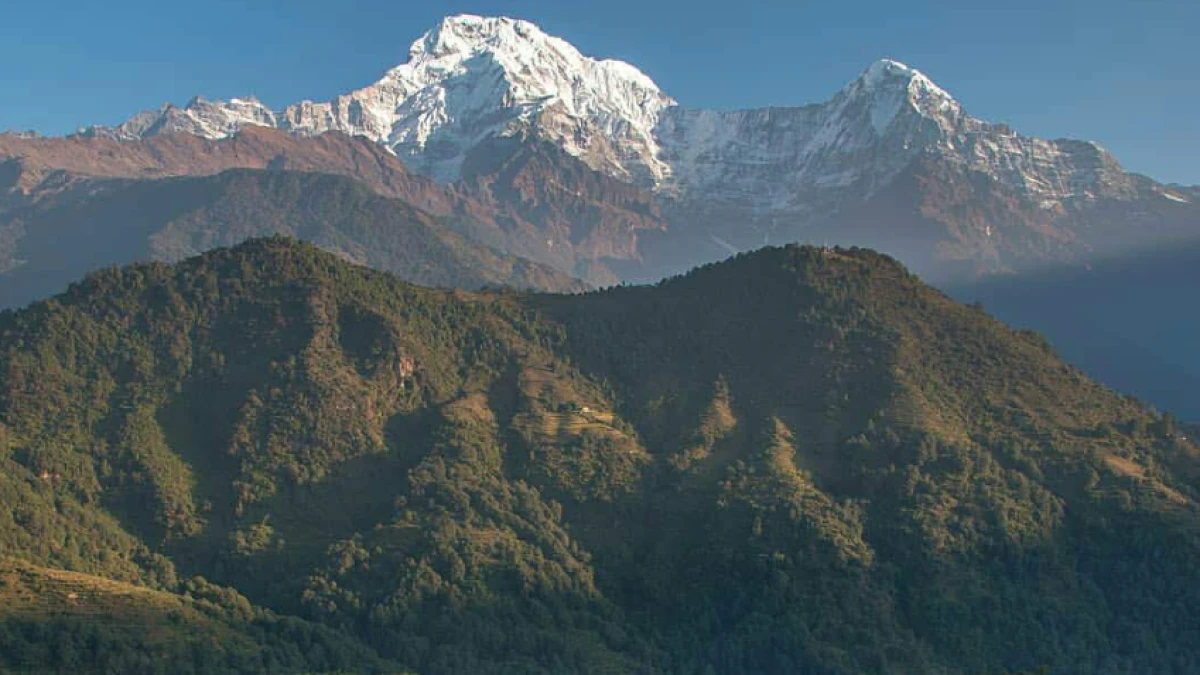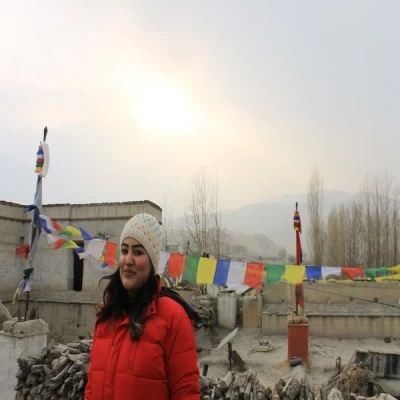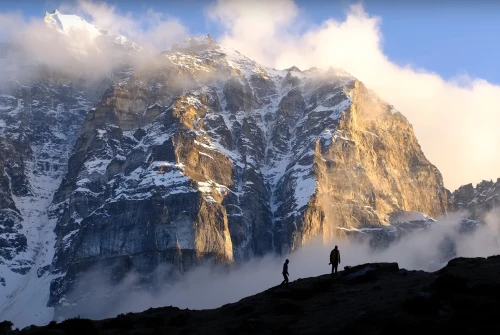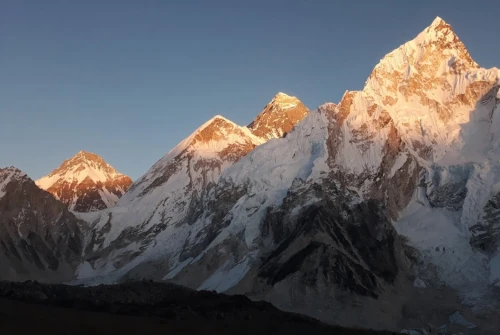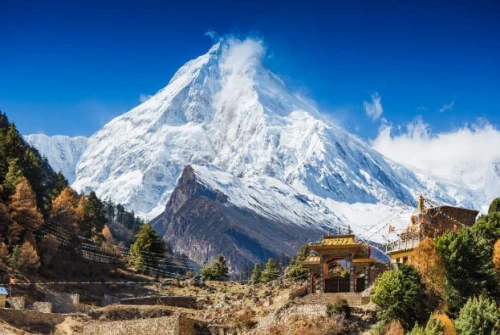Overview
The Poon Hill Trek in Nepal is more than just a short Himalayan journey; it is a window into nature’s grandeur and cultural richness. At just 3,210 meters, Poon Hill may not be the highest point in the Annapurna region, but it is one of the most iconic sunrise viewpoints in the world. Standing at the viewpoint in the early morning, as the first rays of sunlight gently strike the peaks of Annapurna South, Machapuchare (Fishtail), Hiunchuli, and Dhaulagiri, we are reminded why this trek is so beloved.
One of the most fascinating aspects of the Poon Hill Trek is that it offers something unique in every season. While some treks in Nepal are restricted to specific months, Poon Hill remains accessible for most of the year. The experience, however, transforms dramatically depending on the time of year we choose. Imagine walking through forests bursting with rhododendron blossoms in spring, or breathing crisp, fresh air under the clearest skies of autumn, or perhaps enjoying the serenity of snowy winter landscapes when the trails fall quiet. Each season paints a new picture of this trek, allowing us to live a different adventure every time.
Choosing the best time to trek to Poon Hill is not only about weather—it’s about the kind of memory we want to create. Do we want the liveliness of spring blossoms? The solitude of winter? The festival spirit of autumn? Or do we want to see the hills drenched in green during the summer monsoon? To help us decide, let’s explore the seasons in detail, month by month, and uncover what makes each unique.
Spring (March – May)
Spring is widely celebrated as one of the best times to do the Poon Hill Trek, and for good reason.
March: The Awakening of the Trails
March is when the Himalayas wake up after the winter slumber. The days begin to warm, the snow begins to melt on lower ridges, and trekkers return to the trails. The rhododendrons slowly start blooming, turning patches of forest into gentle shades of pink and red. As we walk through villages, farmers prepare their fields for planting, and the energy of new beginnings is felt everywhere. Morning skies are usually clear, offering excellent views of Annapurna and Dhaulagiri.
April: The Peak of Rhododendron Season
April is perhaps the most magical month in the Annapurna region. Entire hillsides burst into color as the rhododendron forests bloom in full. Trekking through Ghorepani feels like stepping into a natural paradise, with petals scattered along the trails and birds singing overhead. The weather is comfortably warm during the day, cool in the evenings, and perfect for trekking. Standing at Poon Hill at sunrise in April is an experience of pure wonder: glowing snow-capped peaks surrounded by hills draped in red, pink, and white flowers.
May: Warmer Days and Pleasant Nights
By May, the days become warmer, sometimes even hot at lower altitudes. The rhododendron blossoms begin to fade, but the landscapes remain beautiful and green. The skies remain fairly clear, though occasional haze can appear in the afternoons. Still, sunrise at Poon Hill continues to deliver spectacular mountain views. May also attracts fewer crowds compared to April, offering a more peaceful experience on the trails.
Why Spring is Special: Trekking in spring means walking in vibrant forests, enjoying comfortable weather, and witnessing the Himalayas at their most colorful. It is the best time for nature lovers and those who want both beauty and liveliness on the trail.
Summer & Monsoon (June – August)
While summer is the least recommended season, it has its unique appeal for certain trekkers.
June: The Arrival of the Monsoon
The early weeks of June can still be good for trekking, but as the month progresses, rainfall becomes frequent. Trails start to glisten with wet earth, waterfalls grow stronger, and the greenery deepens. The mountain views begin to play hide-and-seek behind clouds, though lucky mornings may still offer glimpses of the peaks.
July: Rainy Trails and Lush Forests
July is the heart of the monsoon. Heavy rains sweep across the region, turning trails muddy and making some sections slippery. Leeches in the lower forested areas become common, so trekkers need to be prepared. While visibility is often poor, the valleys are alive with rushing rivers, waterfalls, and an explosion of greenery. Few trekkers are seen, meaning the tea houses are quiet and serene.
August: The Last Breath of the Monsoon
Rain continues into August, though the skies slowly begin to open toward the end of the month. Hills are at their greenest, fields are fertile, and rivers roar with monsoon energy. Though still not the best for clear mountain views, August offers a sense of calm and solitude that other months cannot.
Why Summer is Not Recommended: The monsoon months bring heavy rain, slippery trails, and limited visibility, making them the least ideal for mountain views. However, for solitude seekers and those who enjoy lush landscapes, it can still be rewarding.
Autumn (September – November)
Autumn is hands down the most recommended time to trek to Poon Hill, with ideal weather, stunning visibility, and vibrant local culture.
September: Fresh After the Rain
As the monsoon ends, the skies clear, and the air feels fresh and washed clean. The fields are green and full of life, and the mountains appear sharp and majestic against the blue sky. Trails are quieter compared to October, making September a perfect balance of good weather and fewer crowds.
October: The Golden Month
October is the most popular trekking month in Nepal. The skies remain clear, with the sharpest mountain views of the year. The weather is warm during the day and pleasantly cool at night. This month also coincides with Nepal’s greatest festivals, Dashain and Tihar, allowing trekkers to witness traditional celebrations in the villages. While trails are busy, the energy is vibrant and festive, adding a cultural layer to the trek.
November: Crisp Air and Fewer Crowds
November continues the trend of excellent weather and mountain clarity, but nights are cooler. This month is slightly less crowded than October, offering a more peaceful experience while still guaranteeing breathtaking sunrise views from Poon Hill.
Why Autumn is Special: Autumn delivers the clearest mountain views of the year, perfect temperatures, and cultural celebrations. It’s the best season for trekkers who want reliability, unbeatable visibility, and a lively yet authentic Himalayan atmosphere.
Winter (December – February)
Winter transforms Poon Hill into a tranquil, snowy wonderland.
December: Crisp and Clear
Early winter is cold but manageable, with crystal-clear skies and striking views. Trekking in December offers a peaceful trail with fewer crowds, making it one of the best months for solitude seekers.
January: Snow-Covered Serenity
January is the coldest month, with freezing mornings and evenings. Snow may cover parts of the trail and Poon Hill itself, adding to the magical atmosphere. Views are sharp and dramatic, though trekkers need warm clothing and good preparation.
February: Winter Fades Slowly
By February, the weather begins to ease, though snow may still linger in higher areas. The trails remain quiet, and the air is crisp and fresh. February is a good choice for those who don’t mind the cold and want to enjoy Poon Hill in peace.
Why Winter is Special: While cold, winter offers the sharpest visibility and the quietest trails. The snow adds magic to the sunrise experience, making it perfect for trekkers seeking solitude and beauty.
Best and Worst Times for the Poon Hill Trek
- Best Seasons: Spring (March–May) and Autumn (September–November) are the two most recommended times to do the Poon Hill Trek. Both offer excellent weather, breathtaking scenery, and rewarding cultural experiences.
- Worst Season: July and August during the peak monsoon are not recommended due to heavy rain, muddy trails, leeches, and poor mountain visibility.
Spring vs. Autumn – Which is Better?
Both spring and autumn are fantastic, but they deliver different experiences:
- Spring (March–May): Best for flower lovers and those who want to walk through colorful rhododendron forests. The weather is warm and lively, and the landscapes are bursting with vibrancy.
- Autumn (September–November): Best for crystal-clear skies, sharp mountain views, and cultural encounters. October, in particular, offers the most dramatic scenery but also the busiest trails.
If we dream of trekking through flower-filled forests, spring is the way to go. If we want guaranteed visibility and cultural depth, autumn is unbeatable. Both seasons promise unforgettable memories, but the choice depends on whether we are drawn more to nature’s blossoms or mountain clarity and culture.
Final Verdict: Which Season Should You Choose?
If we long to walk through forests blooming with rhododendrons and want a colorful, vibrant trek, then spring (March–May) will make our journey unforgettable. If we dream of the sharpest mountain views under clear blue skies, combined with the chance to witness Nepal’s greatest festivals, then autumn (September–November) is the perfect choice. Neither is better in an absolute sense; it depends on the memory we want to create. But one thing is certain: whether we go in spring or autumn, Poon Hill will reward us with a sunrise and an experience we’ll carry in our hearts forever.
